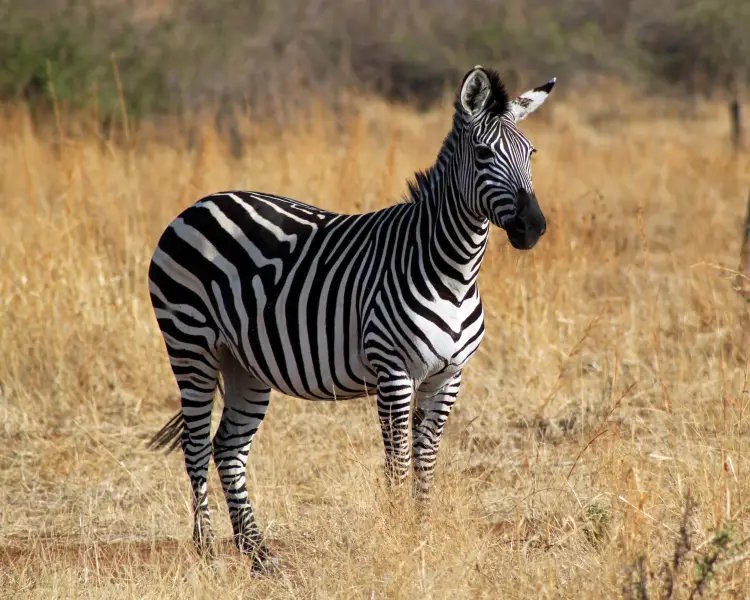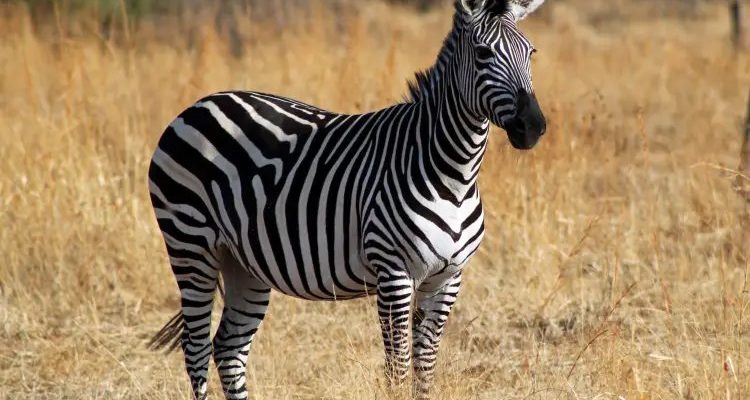
Let’s dive into what makes the plains zebra a fascinating animal, while also understanding the potential risks they can present. After all, just because they roam in herds and munch on grass doesn’t mean they’re entirely harmless. In this article, we’ll explore everything from their behavior to how interactions with humans can go wrong.
Understanding the Plains Zebra
Plains zebras, known scientifically as *Equus quagga*, are one of the most common zebra species. They inhabit various regions across Southern and Eastern Africa, often found in grasslands, savannas, and woodlands. Their iconic stripes serve various purposes, such as camouflage and social interaction. However, these stripes also make them a popular attraction for wildlife lovers.
Social creatures by nature, plains zebras are commonly seen in herds. They tend to live in small family groups led by a dominant male, with females and their young forming the bulk of the herd. This social structure helps them protect one another from predators, reinforcing the importance of community in the animal kingdom.
One interesting fact about plains zebras is that they have a strong fight or flight instinct. When threatened, they can run swiftly, reaching speeds of up to 40 miles per hour. Their powerful kicks and sharp teeth are also effective defenses, making them potentially dangerous when cornered.
The Behavior of Plains Zebras
Zebras have unique behaviors that can shed light on their temperament. Generally, they are known to be skittish around humans. While they’re not aggressive by nature, they will defend themselves if they feel threatened. For example, if a person approaches too closely, a zebra might kick or bite as a way to protect itself or its young.
Another behavior to consider is their communication style. Zebras use a range of vocalizations, body language, and even facial expressions to convey messages. Their ears twitch and turn to show interest or alertness to potential dangers. If you see a zebra with its ears pinned back, it’s best to back off—this is a clear sign of distress or irritation.
Let’s not forget about their protective instincts. A zebra mother will fiercely defend her foal against perceived threats, including humans. This fierce loyalty can make an encounter with a mother and her young particularly risky. Always remember: wild animals can be unpredictable, especially when they’re protecting their offspring.
When Do Plains Zebras Become Dangerous?
Now, you might be wondering: when exactly do plains zebras become dangerous? It usually boils down to two main factors—stress and proximity. If zebras feel threatened, they can quickly switch from docile to defensive. This is especially true when humans encroach on their territory or approach too closely.
For instance, if a group of tourists gets too close to a herd, the zebras might feel cornered. In their defense, they may kick out, which can cause serious injury to anyone nearby. The key takeaway here is that it’s important to maintain a safe distance and observe these creatures from afar.
Additionally, interactions with males can be more intense during mating seasons. Dominant males are particularly aggressive towards other males—and anyone else who ventures too close to their territory. This behavior is typical in many animal species as they establish dominance to attract females. So, if you’re around during breeding time, it’s wise to exercise extra caution.
Safety Tips for Encountering Plains Zebras
If you find yourself in an area where plains zebras roam, it’s crucial to know how to behave to minimize risks. Here are some key safety tips you should keep in mind:
- Keep your distance: Always maintain a safe distance—ideally 100 feet or more. This gives zebras space to feel secure.
- Stay calm: Move slowly and avoid sudden movements to prevent startling them.
- Avoid feeding them: Feeding wild animals can disrupt their natural behavior and lead to aggressive interactions.
- Watch for signs of aggression: Pay attention to their body language; pinned ears and stomping indicate they’re not comfortable.
Following these precautions allows you to enjoy watching these beautiful animals without putting yourself in danger. Just like with any wild creature, respect is key to a safe and enjoyable experience.
The Role of Conservation in Zebra Safety
Conservation efforts play an important role in protecting both zebras and humans. By ensuring these animals have habitats free from urban encroachment, we reduce the chances of dangerous encounters. When zebras are thriving in their natural environments, they are less likely to feel threatened by human activity.
Moreover, education is vital. Many wildlife organizations work to educate the public about proper behavior around zebras and other wildlife. Understanding these animals helps foster respect and care, benefiting both humans and zebras alike.
Participating in or supporting conservation initiatives can also help create safer environments. Many local organizations strive to protect zebra habitats and educate communities about coexisting with wildlife. When humans and zebras understand each other better, it leads to a more harmonious relationship.
In summary, while plains zebras are generally not dangerous to humans, they can become aggressive if they feel threatened or cornered. Like all wild animals, they deserve our respect and understanding. By keeping a safe distance, being aware of their behavior, and supporting conservation efforts, we can appreciate these majestic creatures without putting ourselves at risk.
So, the next time you marvel at a group of zebras grazing under the African sun, remember that there’s a lot more to these striped beauties than meets the eye. By respecting their space and understanding their behavior, we can enjoy a peaceful coexistence just as nature intended.

